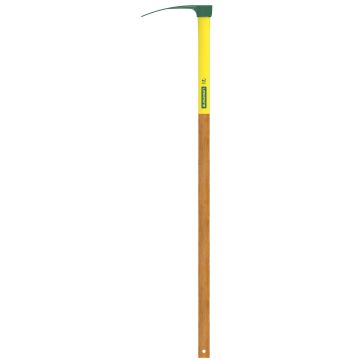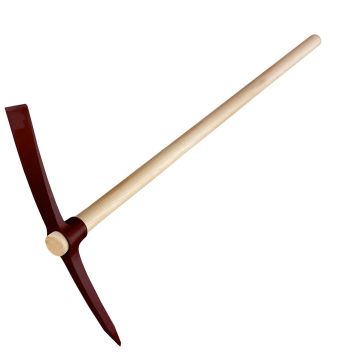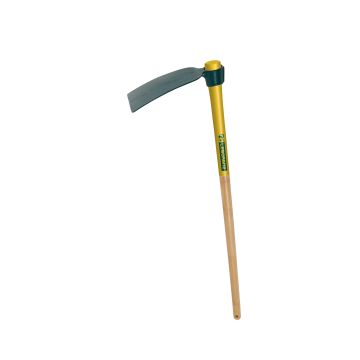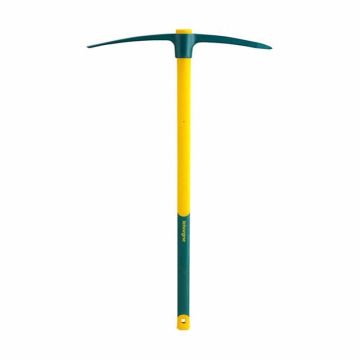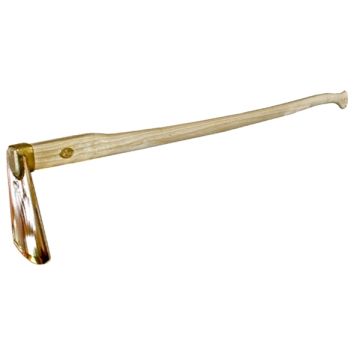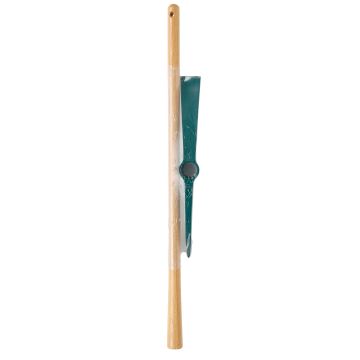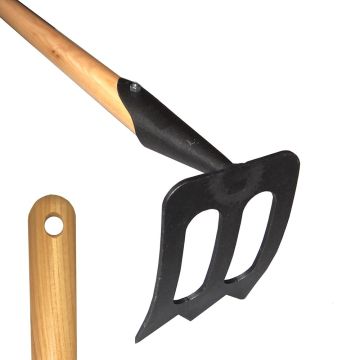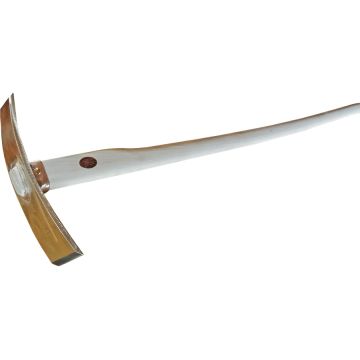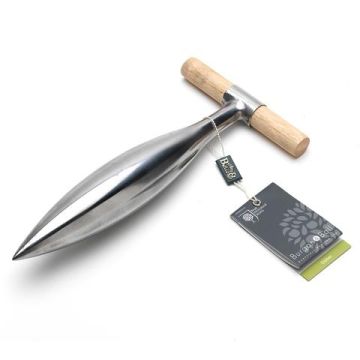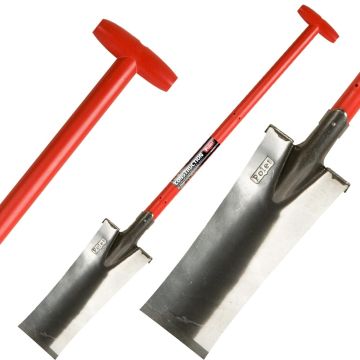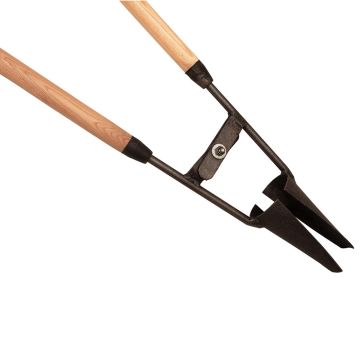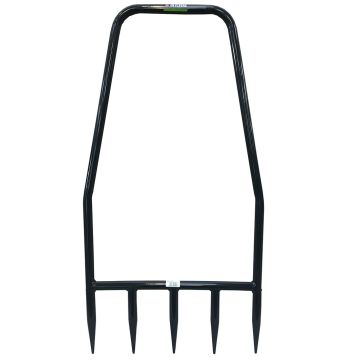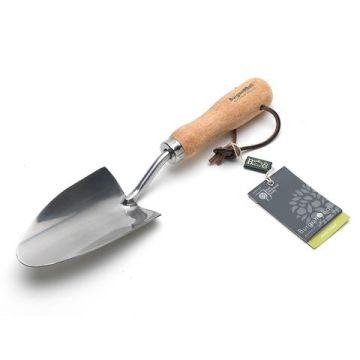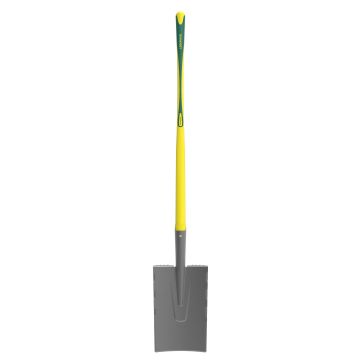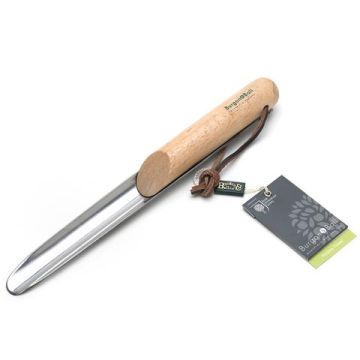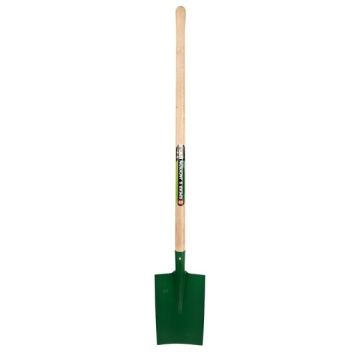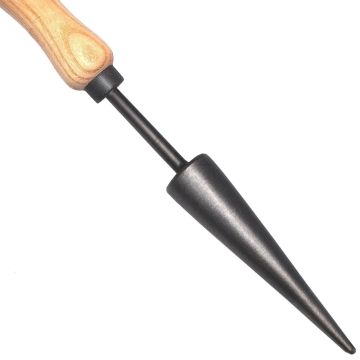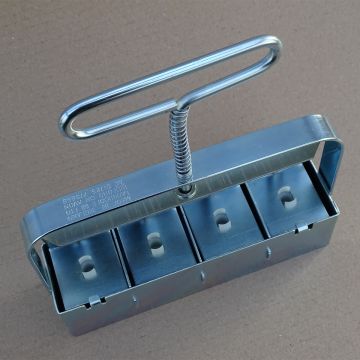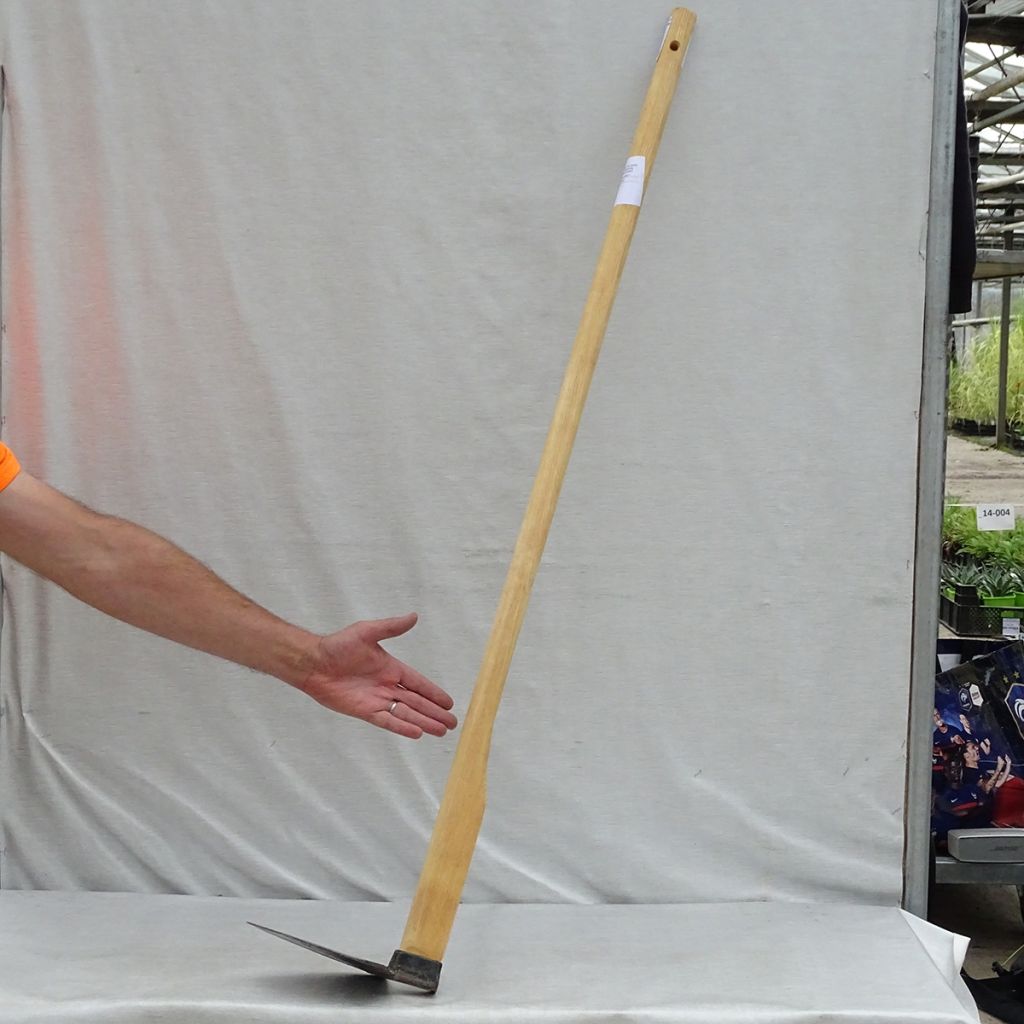

Forged steel pointed draw hoe - Gschwind artisanal range
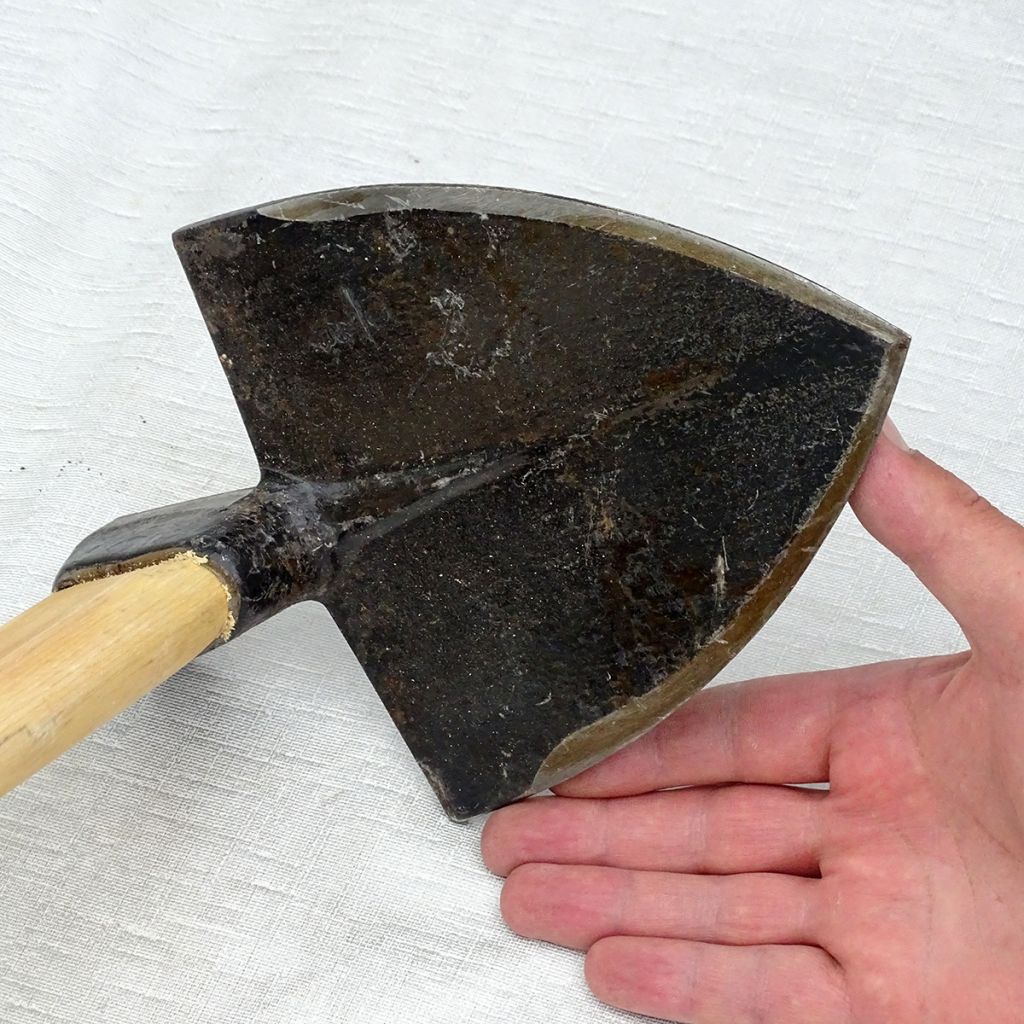

Forged steel pointed draw hoe - Gschwind artisanal range
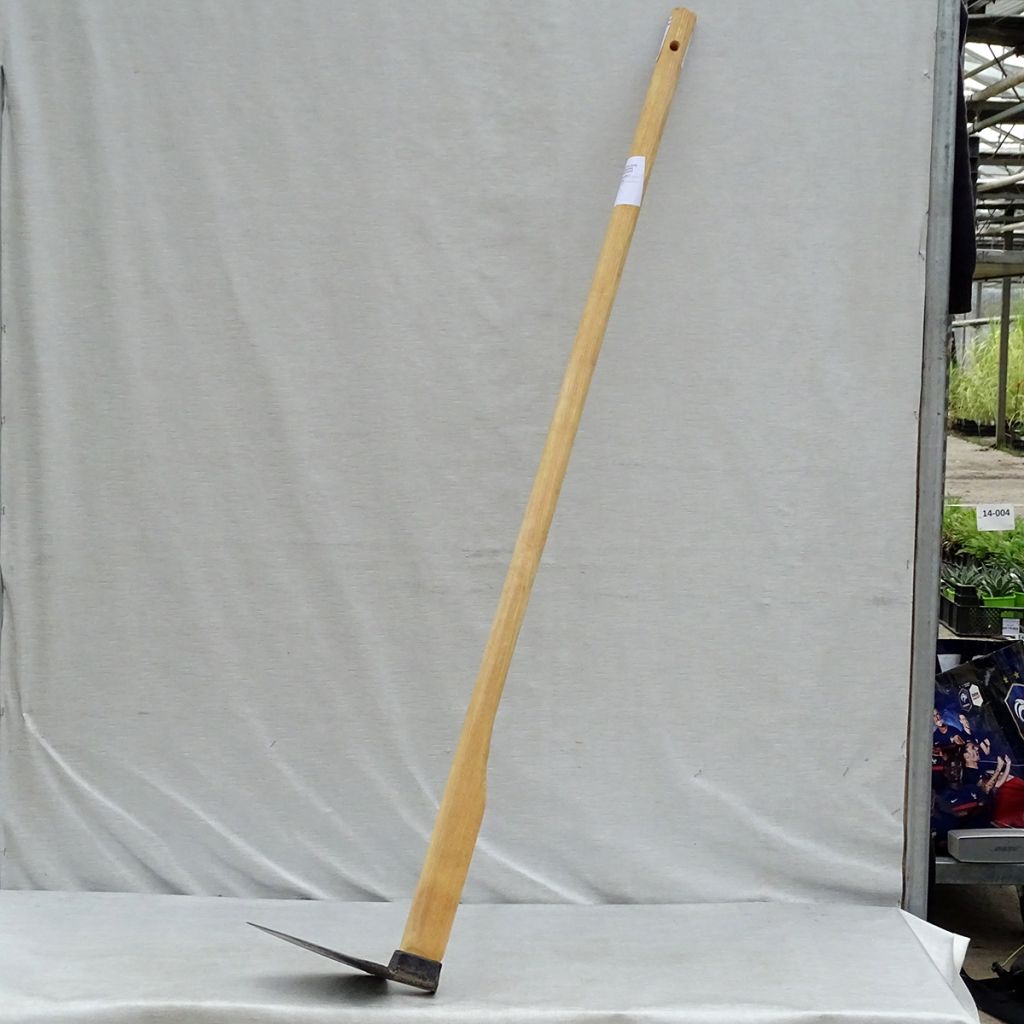

Forged steel pointed draw hoe - Gschwind artisanal range
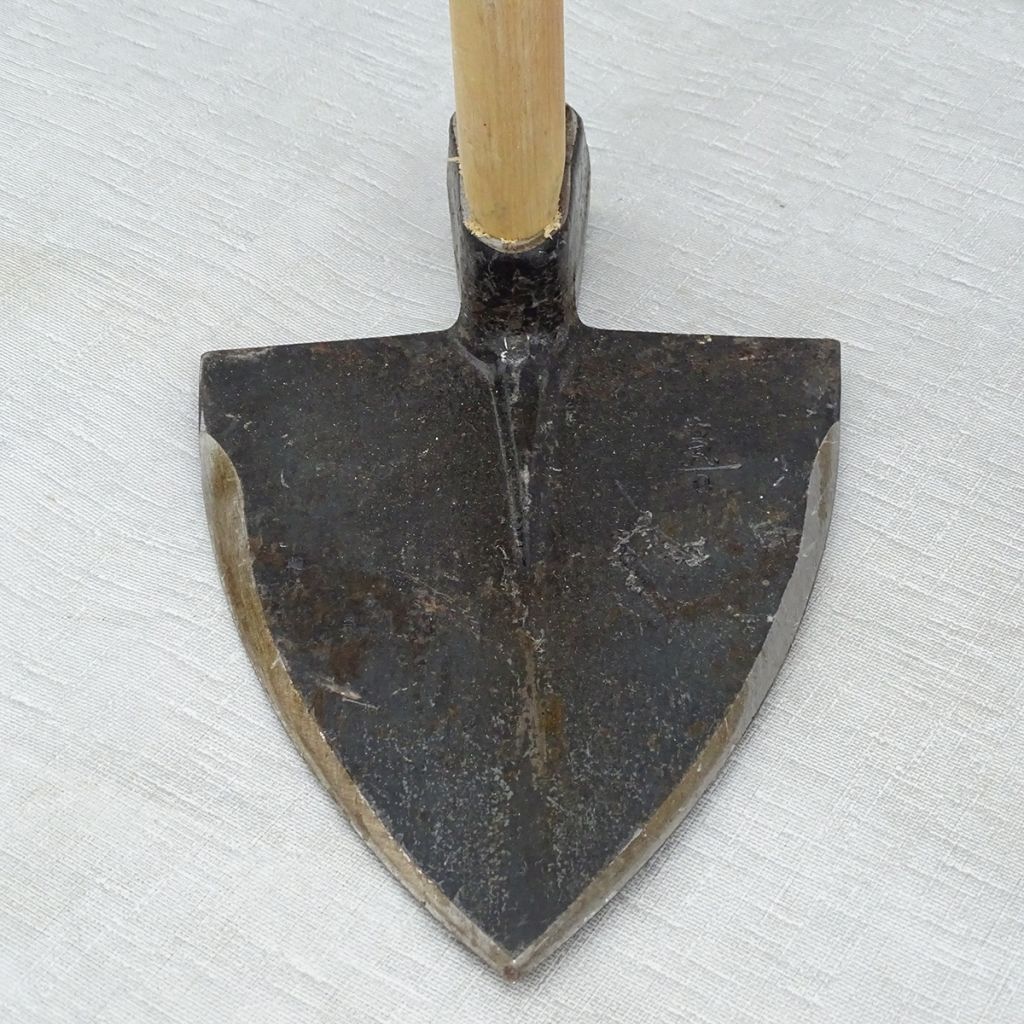

Forged steel pointed draw hoe - Gschwind artisanal range
Forged steel pointed draw hoe - Gschwind artisanal range
We guarantee the quality of our plants for a full growing cycle, and will replace at our expense any plant that fails to recover under normal climatic and planting conditions.
From €7.90 for pickup delivery and €6.90 for home delivery
Express home delivery from €8.90.
The Gschwind forged steel pointed draw hoe is a powerful yet precise tool, thanks to its pointed and bevelled head. It has a long 135 cm wooden handle that is ergonomically designed and reinforced at the socket to enhance the tool's durability. Its hand-forged steel head is very strong, measuring 19 cm long and 15 cm wide, with a heart-shaped blade for creating perfect furrows. Ideally, use it to prepare irrigation furrows, clear your soil, aerate it, earth up beans and potatoes, and cut through the strongest roots. It is a high-quality hoe, suitable for regular use in the garden. 2-year manufacturer's warranty.
Dimensions: Blade: 19 cm x 15 cm - Weight: 1.2 kg Handle length: 135 cm
The pointed draw hoe is a basic tool, designed for weeding without the use of chemicals and for working the soil surface. Its heavy and pointed head is specially adapted for breaking up the surface and deeply loosening even compact and heavy soils. Closer to a pickaxe than a hoe, it allows you to crumble and lighten the top layer of soil after digging, uproot weeds, earth up vegetables by gathering soil around their base, or even dig shallow holes and furrows for planting. Like other hoes, the pointed draw hoe can be used to loosen and break up the top layer of soil, leaving the soil well-aerated around the cultivated plants in the vegetable garden or ornamental garden. It also helps prevent the formation of a compacted layer that occurs after watering or rain in clayey or loamy soils. This hard and compact layer, which is very difficult to rehydrate and suffocating for plants, also promotes the upward movement of water to the surface and its evaporation. Working the soil on the surface after watering limits water evaporation. This model is equipped with a hand-forged steel heart-shaped head. Its large dimensions make it a perfect tool for quickly working the soil on the surface and breaking up clods. The 135 cm long and lightweight handle, with a much wider section at the socket, ensures powerful strikes, comfortable grip, and preservation of your back.
Gschwind is a Swiss company specialising in the manufacturing of high-quality hand tools that combine robustness and ergonomics while meeting the most specific needs! This tool is made in Germany.
Technical features
Tips
Other Hoes and pick axes
View all →This item has not been reviewed yet - be the first to leave a review about it.
Similar products
Haven't found what you were looking for?
Hardiness is the lowest winter temperature a plant can endure without suffering serious damage or even dying. However, hardiness is affected by location (a sheltered area, such as a patio), protection (winter cover) and soil type (hardiness is improved by well-drained soil).
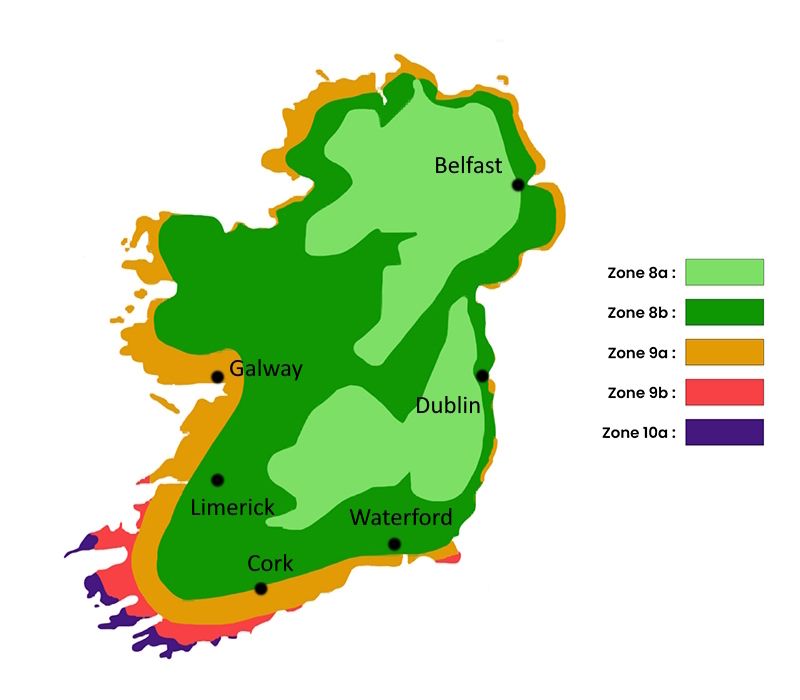
Photo Sharing Terms & Conditions
In order to encourage gardeners to interact and share their experiences, Promesse de fleurs offers various media enabling content to be uploaded onto its Site - in particular via the ‘Photo sharing’ module.
The User agrees to refrain from:
- Posting any content that is illegal, prejudicial, insulting, racist, inciteful to hatred, revisionist, contrary to public decency, that infringes on privacy or on the privacy rights of third parties, in particular the publicity rights of persons and goods, intellectual property rights, or the right to privacy.
- Submitting content on behalf of a third party;
- Impersonate the identity of a third party and/or publish any personal information about a third party;
In general, the User undertakes to refrain from any unethical behaviour.
All Content (in particular text, comments, files, images, photos, videos, creative works, etc.), which may be subject to property or intellectual property rights, image or other private rights, shall remain the property of the User, subject to the limited rights granted by the terms of the licence granted by Promesse de fleurs as stated below. Users are at liberty to publish or not to publish such Content on the Site, notably via the ‘Photo Sharing’ facility, and accept that this Content shall be made public and freely accessible, notably on the Internet.
Users further acknowledge, undertake to have ,and guarantee that they hold all necessary rights and permissions to publish such material on the Site, in particular with regard to the legislation in force pertaining to any privacy, property, intellectual property, image, or contractual rights, or rights of any other nature. By publishing such Content on the Site, Users acknowledge accepting full liability as publishers of the Content within the meaning of the law, and grant Promesse de fleurs, free of charge, an inclusive, worldwide licence for the said Content for the entire duration of its publication, including all reproduction, representation, up/downloading, displaying, performing, transmission, and storage rights.
Users also grant permission for their name to be linked to the Content and accept that this link may not always be made available.
By engaging in posting material, Users consent to their Content becoming automatically accessible on the Internet, in particular on other sites and/or blogs and/or web pages of the Promesse de fleurs site, including in particular social pages and the Promesse de fleurs catalogue.
Users may secure the removal of entrusted content free of charge by issuing a simple request via our contact form.
The flowering period indicated on our website applies to countries and regions located in USDA zone 8 (France, the United Kingdom, Ireland, the Netherlands, etc.)
It will vary according to where you live:
- In zones 9 to 10 (Italy, Spain, Greece, etc.), flowering will occur about 2 to 4 weeks earlier.
- In zones 6 to 7 (Germany, Poland, Slovenia, and lower mountainous regions), flowering will be delayed by 2 to 3 weeks.
- In zone 5 (Central Europe, Scandinavia), blooming will be delayed by 3 to 5 weeks.
In temperate climates, pruning of spring-flowering shrubs (forsythia, spireas, etc.) should be done just after flowering.
Pruning of summer-flowering shrubs (Indian Lilac, Perovskia, etc.) can be done in winter or spring.
In cold regions as well as with frost-sensitive plants, avoid pruning too early when severe frosts may still occur.
The planting period indicated on our website applies to countries and regions located in USDA zone 8 (France, United Kingdom, Ireland, Netherlands).
It will vary according to where you live:
- In Mediterranean zones (Marseille, Madrid, Milan, etc.), autumn and winter are the best planting periods.
- In continental zones (Strasbourg, Munich, Vienna, etc.), delay planting by 2 to 3 weeks in spring and bring it forward by 2 to 4 weeks in autumn.
- In mountainous regions (the Alps, Pyrenees, Carpathians, etc.), it is best to plant in late spring (May-June) or late summer (August-September).
The harvesting period indicated on our website applies to countries and regions in USDA zone 8 (France, England, Ireland, the Netherlands).
In colder areas (Scandinavia, Poland, Austria...) fruit and vegetable harvests are likely to be delayed by 3-4 weeks.
In warmer areas (Italy, Spain, Greece, etc.), harvesting will probably take place earlier, depending on weather conditions.
The sowing periods indicated on our website apply to countries and regions within USDA Zone 8 (France, UK, Ireland, Netherlands).
In colder areas (Scandinavia, Poland, Austria...), delay any outdoor sowing by 3-4 weeks, or sow under glass.
In warmer climes (Italy, Spain, Greece, etc.), bring outdoor sowing forward by a few weeks.

































